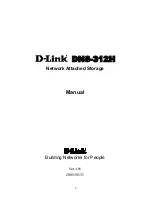
2-28
Introduction to RAID
maximize virtual drive availability (fault tolerance), virtual drive
performance, and virtual drive capacity.
2.6.1
Maximizing Fault Tolerance
Fault tolerance is achieved through the ability to perform automatic and
transparent rebuilds using hot spare drives and hot swaps. A hot spare
drive is an unused online available drive that the RAID controller instantly
plugs into the system when an active drive fails. After the hot spare is
automatically moved into the RAID drive group, the failed drive is
automatically rebuilt on the spare drive. The RAID drive group continues
to handle requests while the rebuild occurs.
A hot swap is the manual substitution of a replacement unit in a disk
subsystem for a defective one, where the substitution can be performed
while the subsystem is runninghot swap drives. Auto-Rebuild in the
WebBIOS Configuration Utility allows a failed drive to be replaced and
automatically rebuilt by “hot-swapping” the drive in the same drive bay.
The RAID drive group continues to handle requests while the rebuild
occurs, providing a high degree of fault tolerance and zero downtime.
Table 2.13
RAID Levels and Fault Tolerance
RAID
Level
Fault Tolerance
0
Does not provide fault tolerance. All data is lost if any drive fails. Disk striping writes
data across multiple drives instead of just one drive. It involves partitioning each drive
storage space into stripes that can vary in size. RAID 0 is ideal for applications that
require high bandwidth but do not require fault tolerance.
1
Provides complete data redundancy. If one drive fails, the contents of the other drive in
the drive group can be used to run the system and reconstruct the failed drive.
The primary advantage of disk mirroring is that it provides 100 percent data
redundancy. Since the contents of the drive are completely written to a second drive,
no data is lost if one of the drives fails. Both drives contain the same data at all times.
RAID 1 is ideal for any application that requires fault tolerance and minimal capacity.
5
Combines distributed parity with disk striping. Parity provides redundancy for one drive
failure without duplicating the contents of entire drives. If a drive fails, the RAID
controller uses the parity data to reconstruct all missing information. In RAID 5, this
method is applied to entire drives or stripes across all drives in a drive group. Using
distributed partiy, RAID 5 offers fault tolerance with limited overhead.
Содержание ThinkServer RD230
Страница 1: ...ThinkServer RD230 RD240 and TD230 MegaRAID SAS Software User Guide ...
Страница 2: ......
Страница 3: ...ThinkServer RD230 RD240 and TD230 MegaRAID SAS Software User Guide ...
Страница 16: ...Contents ...
Страница 24: ...Contents ...
Страница 68: ...2 36 Introduction to RAID ...
Страница 252: ...7 10 MegaRAID Storage Manager Window and Menus ...
Страница 262: ...8 10 Configuration Figure 8 5 Virtual Drive Creation Menu The dialog box shown in Figure 8 6 appears ...
Страница 300: ...8 48 Configuration ...
Страница 328: ...9 28 Monitoring System Events and Storage Devices ...
Страница 334: ...10 6 Maintaining and Managing Storage Configurations ...
Страница 360: ...B 12 Glossary ...
Страница 363: ......
Страница 364: ......
















































